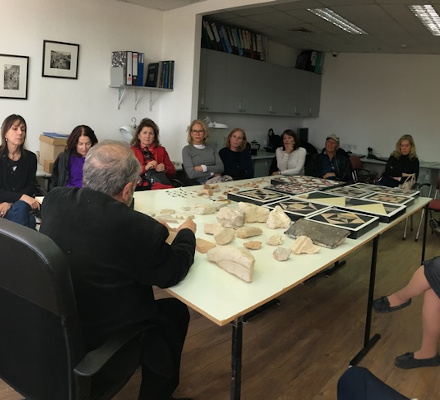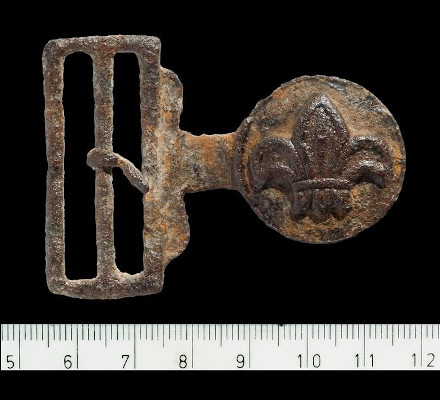Tag Archive for: Jewelry

Find and Finder of the Month: A Rare Gold Bead from the First Temple Period found by Binyamin Milt
Binyamin Milt from Jerusalem who found the Gold Bead.
Because of the Covid-19 lockdown and restrictions over the past few months, it took a while until we managed to go over the multitude of artifacts found in the sifting over August. We…

Better Than A Museum
Visit Us!
Come visit us in our research lab! We miss you! For our supporters, we are offering tours of our research laboratory where you can see all of our special finds and learn about them from one of our expert archaeologists. It is one…

Our (Virtual) Cabinet of Curiosities
Check out our newest "unidentified finds" and see if you can help!

Bejeweled
Research on glass Rings and Bracelets from the Temple Mount Sifting Project. We're bejeweled!
Tag Archive for: Jewelry

Iron Age II Gold Bead Made in Granulation Technique
This gold bead, created using the granulation technique during the Iron Age, measures 6mm in diameter and 4mm in height. Its excellent preservation highlights the enduring nature of gold. The granulation technique, involving intricate processes…

Metal Rings of Many Periods
A variety of metal rings, made of many different materials, exhibiting sundry decorations or inlays, representing many periods.

Bronze Fibula (Cloak Clasp)
A fibula is a brooch or pin for fastening garments, typically at the right shoulder. Unlike most modern brooches, fibulae were not only decorative; they originally served a practical function: to fasten clothing, such as cloaks. They were popular in the Roman world, and all consist of a body, a pin, and a catch.
More than a dozen fibulae were found in the sifting. Most of them seem to date to the Roman - Byzantine periods. They are still waiting to be studied, and more elaborate details about them will known in the future.

Glass Rings across the Color Spectrum
Nearly two thousand fragments of glass rings and bracelets have been uncovered by the sifting. These items of Jewelry were manufactured locally for many years — beginning in the Late Roman Period, and all the way up to the mid-20th century. The glass Jewelry comes in colors of the rainbow, and covers a wide quality spectrum — from the simplest baubles, fit only for peasant girls, to feats of intricate manufacture.

Beads of Different Periods
Thousands of beads, spanning the prehistoric to the modern eras, have been spotted by many a diligent eye standing by a sifting station. The beads are formed of many different materials — bone, shell, precious and semi‑precious stone, glass, metal, and even modern plastic to name a few.
A recent study conducted on the drilling technique used to form some of our carnelian beads placed them in sundry ages — some show drill marks unique to the Intermediate Bronze Age, during the late 3rd millennium BCE, while others are harder to pin down, having been drilled with a technique which remained popular from the Bronze Age till late antiquity. The majority of the carnelian beads show evidence of being drilled with diamond dust, a technique first brought to our area in the Early Islamic Period.


